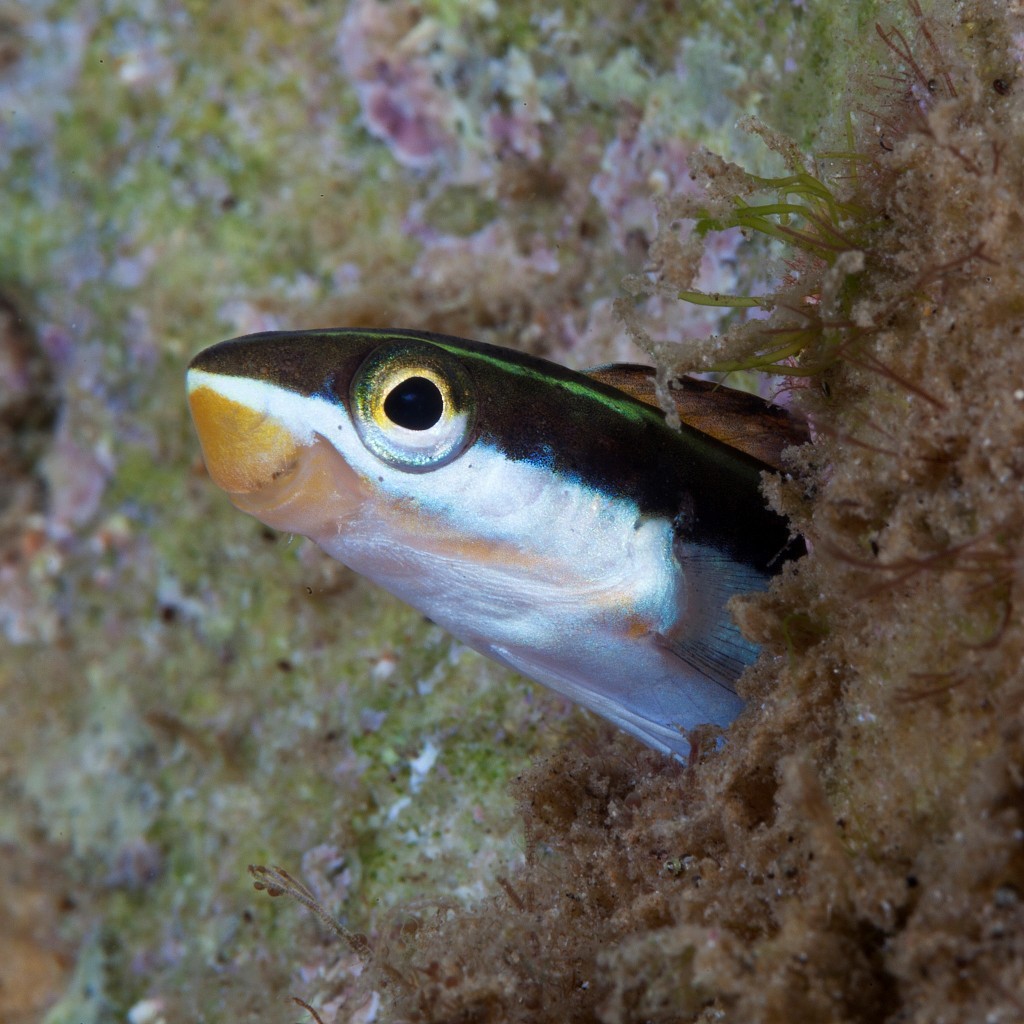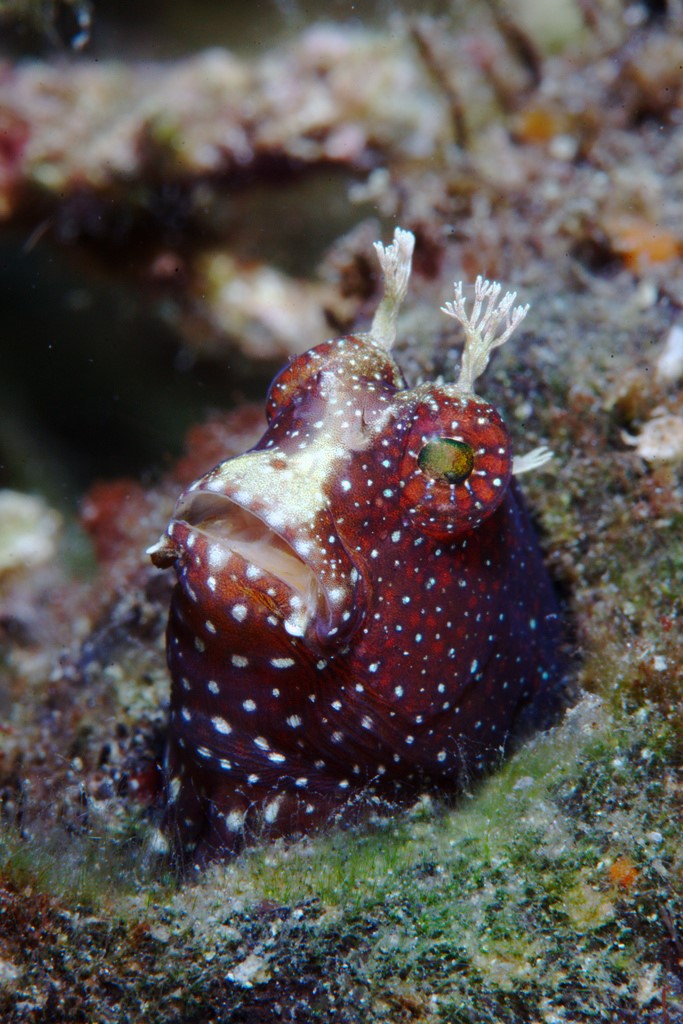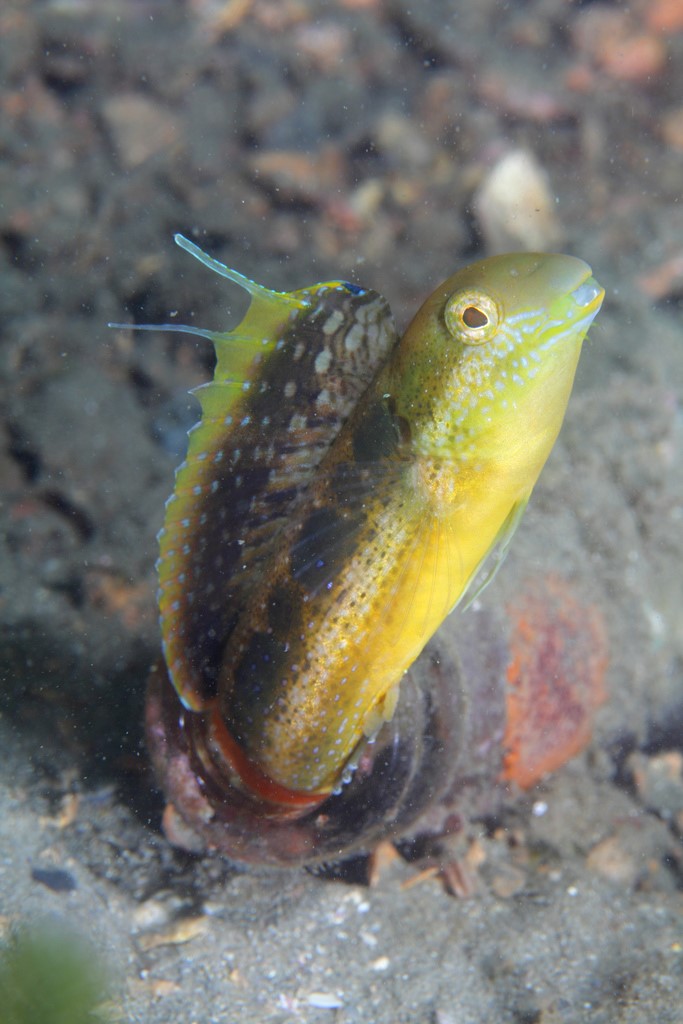By guest blogger Klaus M. Stiefel
Post a picture of a blenny on Facebook, and you’ll certainly harvest many comments along the lines of “soooo cute.” And blennies indeed do often possess comically painted faces and bizarre horn-like structures on their tiny heads that make them look hilarious. But there is more to this large family (396 species listed on fishbase) of small fishes than their cuteness.
Fellow fish nerds sometimes ask me the difference between a goby and a blenny. Divers can spot these small, bottom-loving fish in both tropical and temperate or cold water oceans. But the anatomy and behavior of blennies and gobies differs in a number of ways. While a goby has a fused pelvic fin, which evolved into a suction cup, the fins of blennies are not modified in such a way. Also, blennies often perch in a curved body position, in contrast to the gobies, which rest with a straight body. If you take a close look at the different fish faces, you will often see the aforementioned intricate tassels atop blennies’ heads. These spectacular structures look like psychedelic miniature deer antlers! Most likely they are serving a similar purpose, to show the status of the animal (blenny or deer) to its competitors and potential mates. Finally, the distribution of blennies and gobies is different: blennies are exclusively marine fishes, while some gobies inhabit lakes, rivers and creeks.
A particular interesting group of blenny is the rockskippers: they are amphibious blennies, living in the surf and splash zone of rocky coasts. With twisting, jumping movements, they propel themselves over coastal rocky surfaces. These blenny species constitute a parallel evolutionary development to the mudskippers, amphibious gobies living in the mud out of the water. Similar ecological conditions have brought about similar adaptations.
Blennies are often territorial and like to hide in home burrows or crevices. In Sydney Harbor — in a very Australian choice of dwelling — I’ve seen a blenny living in a discarded beer bottle. I can only hope the little fish was not too disappointed when they found the bottle devoid of brew upon initial inspection. When I encountered this combtooth blenny (see the image below), it was torn between hiding in its home and curiously investigating the clumsy, large creature nearby (me).
The mimic fang blenny also exhibits curious behavior. This tropical and subtropical species (I have seen it in action around Sydney, but also in the Philippines) pretends to be a parasite remover. You are probably familiar with the small wrasses that remove parasites from larger fish at cleaning stations. Often such cleaning stations are fantastic places to see large fishes like manta rays or sharks. There is a mutually beneficial agreement at work here, because the parasites make rich meals for the wrasses. Now, the mimic fang blenny looks and swims just like one of these wrasses, but does not remove parasites. Instead, it abuses the trust of the larger fish (towards what they presume is a cleaner wrasse) to sneak up on them and take out a chunk of skin. A tricky fish, the mimic fang blenny, and I doubt that its victims, had they fingers to type, would comment about its cuteness on Facebook.
If you’re looking for more facts on blennies (and who isn’t), check out Ned and Anna DeLoach’s fantastic Blennywatcher blog.




